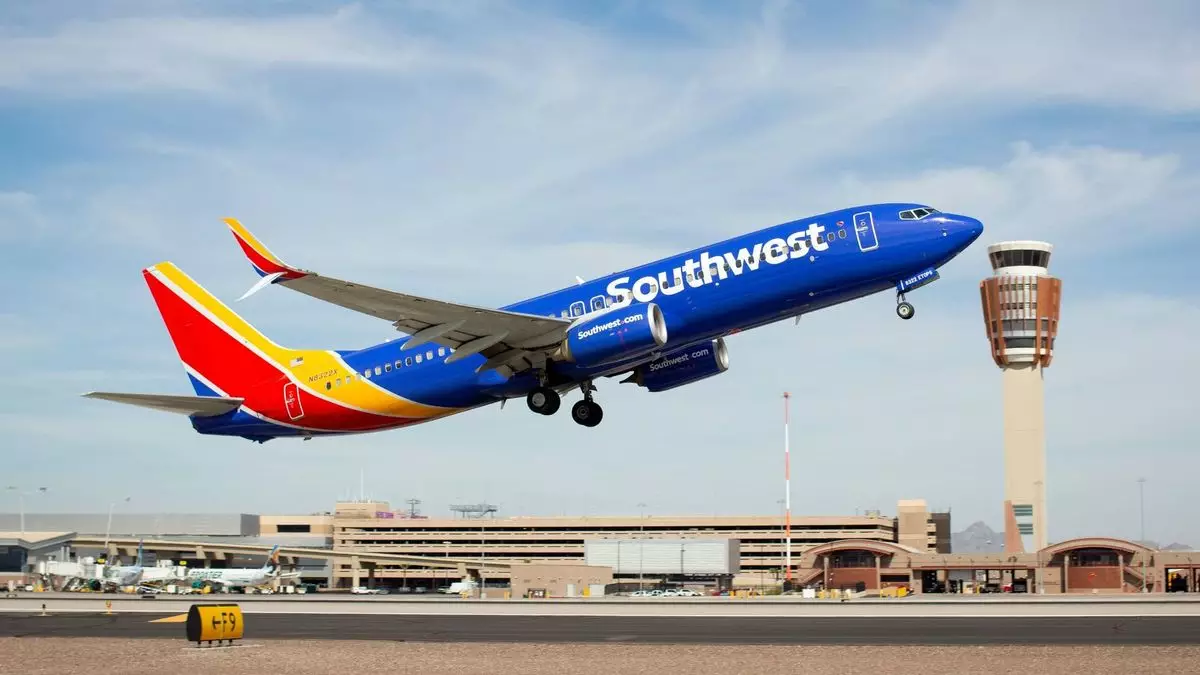In a landmark decision that signifies its evolving approach to air travel, Southwest Airlines has officially launched its inaugural set of red-eye flights. Starting from major hubs in Las Vegas, Los Angeles, and Phoenix, these routes are designed to connect customers to various destinations east of the Mississippi River. With fanfare, the airline welcomed passengers on its first flights with gift bags and commemorative items, aiming to enhance the travel experience. As the airline embarks on this journey, it promises to increase overnight offerings drastically, with plans to expand to 33 daily flights by June.
Southwest’s red-eye initiative isn’t just a product of burgeoning demand for overnight travel, but rather a necessary response to the competitive landscape of the airline industry. Since the pandemic, Southwest’s financial performance has been eclipsed by rivals like Delta, United, and Alaska Airlines. The new overnight flights are part of a broader commercial strategy that also includes the introduction of assigned seating and premium offerings such as extra legroom, aiming to stabilize and potentially boost the airline’s revenue streams.
This strategic pivot indicates that Southwest recognizes the changing dynamics of consumer expectations and the need for more tailored travel options. Enhanced service offerings might not only attract new customers but also retain existing ones eager for a more accommodating flying experience.
At the heart of the red-eye flight introduction is the goal of maximizing aircraft utilization. Southwest’s operations are heavily reliant on quick turnaround times, and with the addition of overnight flights, the airline expects to effectively gain the equivalent of 18 extra aircraft. This improvement could streamline operations and significantly expand the travel options available to customers without requiring a proportional increase in fleet size.
Moreover, Southwest is keen on maximizing connectivity within its network, suggesting that the strategic addition of these overnight routes could reflect a more agile and customer-centric approach to travel. For instance, the upcoming Honolulu-Las Vegas red-eye flight is set to boost itineraries for passengers flying to and from Hawaii by nearly 50%. This operational augmentation could be pivotal in attracting business and leisure travelers alike.
Interline Partnerships: A Broader Vision
Additionally, the launch of an interline partnership with Icelandair highlights Southwest’s ambition to enhance its global connectivity. This collaboration is an essential part of the airline’s new commercial strategy, allowing for seamless itineraries that extend beyond its primary routes. By initially making these interline options available through Icelandair channels, Southwest is taking a calculated step to align its services with international travel trends, but it also raises questions regarding its own booking flexibility in the future.
As Southwest Airlines unfurls its red-eye offerings, the initiative serves a dual purpose: addressing competitive pressures while enhancing the overall flying experience for travelers. The success of these flights will depend on effective implementation and customer reception, paving the way for Southwest to assert itself as a viable contender in the evolving landscape of the airline industry.


Leave a Reply